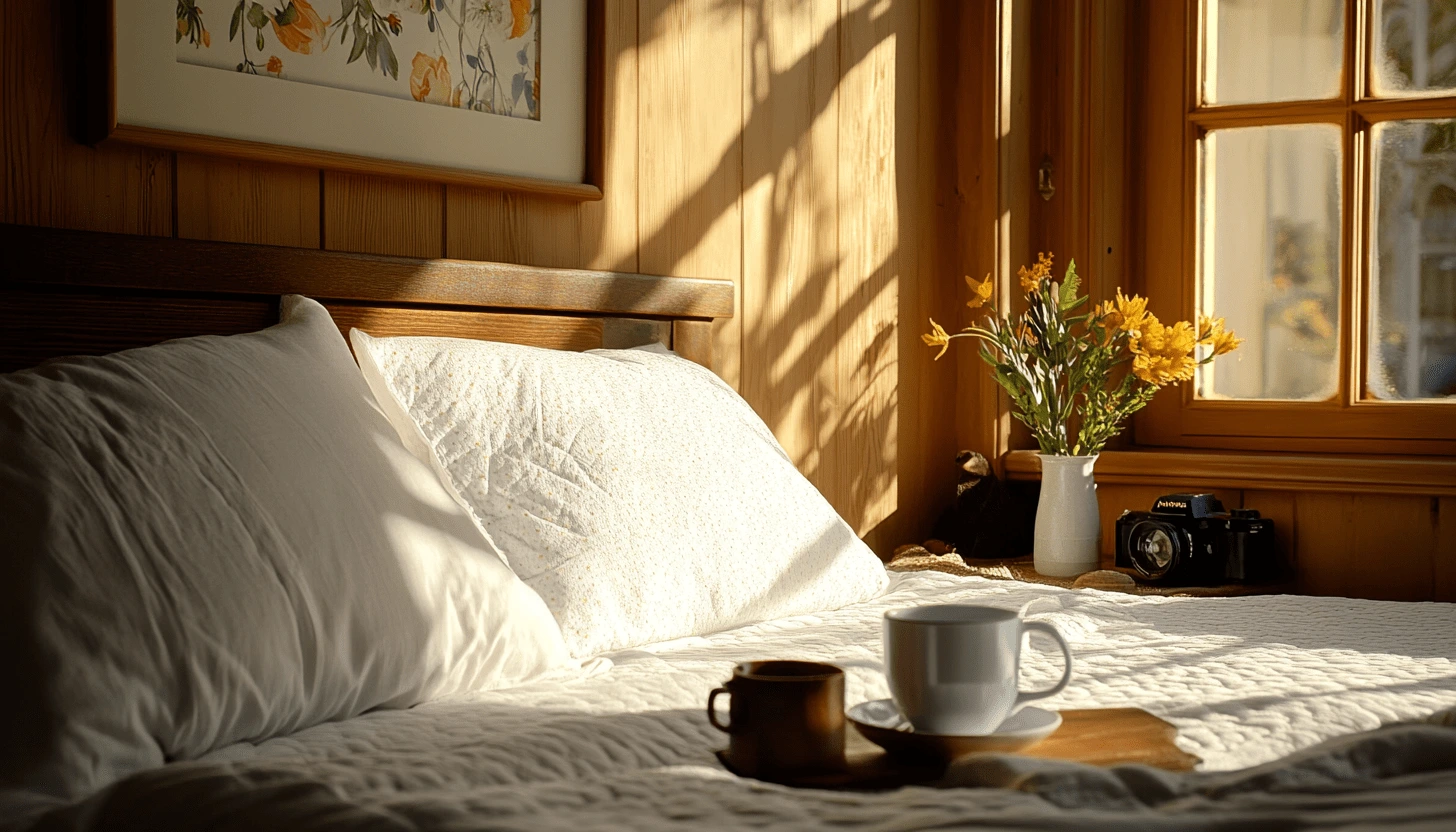Creating a Relaxing Sleep Environment: Tips for a Restful Night's Sleep
Published: February 11, 2025 5 mins read
Do you ever wake up feeling groggy, even after a full night’s sleep? Your sleep environment might be the culprit. The quality of your sleep is influenced by many external factors—temperature, lighting, noise, and even the air quality in your bedroom.
Studies from the CDC and the National Sleep Foundation show that over 35% of adults don’t get enough sleep, often due to poor sleep conditions. A well-designed sleep environment can drastically improve sleep quality, leading to better energy levels, focus, and overall well-being. In this guide, we’ll explore proven strategies to transform your bedroom into a sanctuary for deep, uninterrupted rest.

Our bodies follow a natural circadian rhythm, which regulates sleep-wake cycles based on external cues such as light and temperature. Poor sleep environments disrupt these cycles, making it harder to fall and stay asleep.
A 2017 study published in the journal Sleep found that individuals sleeping in optimized environments, with controlled lighting and temperature, fell asleep 25% faster and experienced deeper, more restorative sleep cycles. Environmental factors like noise pollution, excessive light, and uncomfortable bedding can lead to fragmented sleep, reducing its effectiveness.
The National Sleep Foundation recommends a bedroom temperature between 60-67°F (15-19°C) for optimal sleep. Lower temperatures help the body cool down, which is a natural signal that it’s time to rest.
Pro Tip: Houseplants like aloe vera and snake plants can naturally improve air quality and oxygen levels at night.
A quality mattress should support your spine and pressure points. The lifespan of a mattress is typically 7-10 years—beyond that, it may lose its supportive structure.
Exposure to blue light (from screens, LED lights, and devices) suppresses melatonin production, delaying sleep onset.
Pro Tip: Use red or amber-hued nightlights if you need to get up at night—these have minimal impact on melatonin production.
Even low-level background noise can increase nighttime wakefulness and reduce REM sleep.
Pro Tip: If external noises are unpredictable, noise-canceling headphones with soft sleep bands may be a worthwhile investment.
Clutter can subconsciously increase stress and anxiety, making it harder to relax. Studies show that people sleep better in a clean, organized environment.
Start winding down 90 minutes before bedtime to signal your body that it’s time for sleep.
A high-quality sleep environment isn’t just about comfort—it’s about creating conditions that align with your body’s natural rhythms. By optimizing these key factors, you set yourself up for truly restorative sleep:
✅ Set your bedroom temperature between 60-67°F.
✅ Use blackout curtains and avoid screens before bed.
✅ Invest in a quality mattress, breathable sheets, and proper pillows.
✅ Use white noise machines or earplugs to block noise.
✅ Keep your bedroom decluttered and calming.
✅ Follow a consistent bedtime routine.
By making just one of these adjustments today, you can start experiencing deeper, more restful sleep tonight!
This will close in 20 seconds